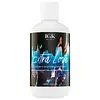What's inside
What's inside
 Key Ingredients
Key Ingredients

 Benefits
Benefits

 Concerns
Concerns

 Ingredients Side-by-side
Ingredients Side-by-side

Water
Skin ConditioningCetearyl Alcohol
EmollientBehentrimonium Chloride
PreservativeCetyl Alcohol
EmollientPropanediol
SolventAmodimethicone
Cetyl Esters
EmollientGlyceryl Stearate
EmollientIsododecane
EmollientStearamidopropyl Dimethylamine
EmulsifyingButyrospermum Parkii Butter
Skin ConditioningSarcosine
Skin ConditioningSalvia Hispanica Seed Extract
EmollientSea Water
HumectantHelianthus Annuus Extract
EmollientTerminalia Ferdinandiana Fruit Extract
AntioxidantOryza Sativa Bran Extract
Skin ConditioningJojoba Esters
EmollientPanthenol
Skin ConditioningPhenoxyethanol
PreservativeCaprylyl Glycol
EmollientStearamine Oxide
CleansingIsopropyl Alcohol
SolventHydroxyethylcellulose
Emulsion StabilisingPolysorbate 60
EmulsifyingGuar Hydroxypropyltrimonium Chloride
Skin ConditioningChlorphenesin
AntimicrobialGlycerin
HumectantPolysorbate 20
EmulsifyingC11-15 Pareth-7
EmulsifyingLaureth-9
EmulsifyingDisodium EDTA
Cetrimonium Chloride
AntimicrobialTrideceth-15
EmulsifyingTrideceth-3
EmulsifyingEthylhexylglycerin
Skin ConditioningBenzyl Alcohol
PerfumingBHT
AntioxidantPentaerythrityl Tetra-Di-T-Butyl Hydroxyhydrocinnamate
AntioxidantTrideceth-12
EmulsifyingQuaternium-95
UV AbsorberCitric Acid
BufferingAcetic Acid
BufferingAlcohol
AntimicrobialCinnamidopropyltrimonium Chloride
Tocopherol
AntioxidantRosmarinus Officinalis Leaf Extract
AntimicrobialButylene Glycol
HumectantCystine Bis-Pg-Propyl Silanetriol
Skin ConditioningHydrolyzed Vegetable Protein Pg-Propyl Silanetriol
Skin ConditioningDisodium Phosphate
BufferingSodium Phosphate
BufferingPotassium Sorbate
PreservativeSodium Hydroxide
BufferingParfum
MaskingWater, Cetearyl Alcohol, Behentrimonium Chloride, Cetyl Alcohol, Propanediol, Amodimethicone, Cetyl Esters, Glyceryl Stearate, Isododecane, Stearamidopropyl Dimethylamine, Butyrospermum Parkii Butter, Sarcosine, Salvia Hispanica Seed Extract, Sea Water, Helianthus Annuus Extract, Terminalia Ferdinandiana Fruit Extract, Oryza Sativa Bran Extract, Jojoba Esters, Panthenol, Phenoxyethanol, Caprylyl Glycol, Stearamine Oxide, Isopropyl Alcohol, Hydroxyethylcellulose, Polysorbate 60, Guar Hydroxypropyltrimonium Chloride, Chlorphenesin, Glycerin, Polysorbate 20, C11-15 Pareth-7, Laureth-9, Disodium EDTA, Cetrimonium Chloride, Trideceth-15, Trideceth-3, Ethylhexylglycerin, Benzyl Alcohol, BHT, Pentaerythrityl Tetra-Di-T-Butyl Hydroxyhydrocinnamate, Trideceth-12, Quaternium-95, Citric Acid, Acetic Acid, Alcohol, Cinnamidopropyltrimonium Chloride, Tocopherol, Rosmarinus Officinalis Leaf Extract, Butylene Glycol, Cystine Bis-Pg-Propyl Silanetriol, Hydrolyzed Vegetable Protein Pg-Propyl Silanetriol, Disodium Phosphate, Sodium Phosphate, Potassium Sorbate, Sodium Hydroxide, Parfum
Ingredients Explained
These ingredients are found in both products.
Ingredients higher up in an ingredient list are typically present in a larger amount.
Caprylyl Glycol is a humectant and emollient, meaning it attracts and preserves moisture.
It is a common ingredient in many products, especially those designed to hydrate skin. The primary benefits are retaining moisture, skin softening, and promoting a healthy skin barrier.
Though Caprylyl Glycol is an alcohol derived from fatty acids, it is not the kind that can dry out skin.
This ingredient is also used as a preservative to extend the life of products. It has slight antimicrobial properties.
Learn more about Caprylyl GlycolCetyl Alcohol is a fatty alcohol. Fatty Alcohols are most often used as an emollient or to thicken a product.
Its main roles are:
Though it has "alcohol" in the name, it is not related to denatured alcohol or ethyl alcohol.
The FDA allows products labeled "alcohol-free" to have fatty alcohols.
Learn more about Cetyl AlcoholCitric Acid is an alpha hydroxy acid (AHA) naturally found in citrus fruits like oranges, lemons, and limes.
Like other AHAs, citric acid can exfoliate skin by breaking down the bonds that hold dead skin cells together. This helps reveal smoother and brighter skin underneath.
However, this exfoliating effect only happens at high concentrations (20%) which can be hard to find in cosmetic products.
Due to this, citric acid is usually included in small amounts as a pH adjuster. This helps keep products slightly more acidic and compatible with skin's natural pH.
In skincare formulas, citric acid can:
While it can provide some skin benefits, research shows lactic acid and glycolic acid are generally more effective and less irritating exfoliants.
Most citric acid used in skincare today is made by fermenting sugars (usually from molasses). This synthetic version is identical to the natural citrus form but easier to stabilize and use in formulations.
Read more about some other popular AHA's here:
Learn more about Citric AcidParfum is a catch-all term for an ingredient or more that is used to give a scent to products.
Also called "fragrance", this ingredient can be a blend of hundreds of chemicals or plant oils. This means every product with "fragrance" or "parfum" in the ingredients list is a different mixture.
For instance, Habanolide is a proprietary trade name for a specific aroma chemical. When used as a fragrance ingredient in cosmetics, most aroma chemicals fall under the broad labeling category of “FRAGRANCE” or “PARFUM” according to EU and US regulations.
The term 'parfum' or 'fragrance' is not regulated in many countries. In many cases, it is up to the brand to define this term.
For instance, many brands choose to label themselves as "fragrance-free" because they are not using synthetic fragrances. However, their products may still contain ingredients such as essential oils that are considered a fragrance by INCI standards.
One example is Calendula flower extract. Calendula is an essential oil that still imparts a scent or 'fragrance'.
Depending on the blend, the ingredients in the mixture can cause allergies and sensitivities on the skin. Some ingredients that are known EU allergens include linalool and citronellol.
Parfum can also be used to mask or cover an unpleasant scent.
The bottom line is: not all fragrances/parfum/ingredients are created equally. If you are worried about fragrances, we recommend taking a closer look at an ingredient. And of course, we always recommend speaking with a professional.
Learn more about ParfumWater. It's the most common cosmetic ingredient of all. You'll usually see it at the top of ingredient lists, meaning that it makes up the largest part of the product.
So why is it so popular? Water most often acts as a solvent - this means that it helps dissolve other ingredients into the formulation.
You'll also recognize water as that liquid we all need to stay alive. If you see this, drink a glass of water. Stay hydrated!
Learn more about Water